

M.C. ESCHER: INFINITE VARIATIONS

MAY 27 – SEPTEMBER 4, 2023

Experience more than 160 works from one of the world’s most recognized artists, M.C. Escher. Infinite Variations chronicles the Dutch artist’s entire career including iconic works such as Day and Night, the fourteen-foot-long Metamorphosis, Ascending and Descending, Drawing Hands, and many others.



Issue: July 1st




Investing In Community
by Sharry L. WhitneyThe Kirkland Art Center has a new Executive Director (check out page 46). This is good news for me as a KAC board member. I was privileged to serve briefly as interim ED while we sought the perfect candidate. During my short stint, not only did I learn about the workings of our community’s art center, but I also began thinking about other organizations in our area. These institutions exist because we, as a community, value their services. Whether we contribute to them through volunteering, donations, or just paying our taxes, we have collectively decided they have value.
Recently, the Town of Kirkland and the Village of Clinton received the exciting news that they are the recipients of a $10 million Downtown Revitalization Initiative (DRI) grant. New York State (We the People) made this investment to “help communities boost their economies by transforming downtowns into vibrant neighborhoods.”

During the pandemic, most people missed community interaction. Though the internet, videoconferencing, and virtual reality have become a new reality in our society, we still value community. We understand the importance of a thriving central hub where real “face time” happens.
During that period of isolation, I realized that I had always taken my local art center for granted, so I asked to join their board of directors. During the last two years of service, I’ve also realized that I take a lot about my community for granted: the shops, concerts, farmers’ market, village park, KAC Run (June 3, 2023!), etc. Now, because of this grant, the many other ideas the community has envisioned for the town and village are a bit closer to becoming a reality. It is not a windfall. It is money hard-earned by us for us. It is a chance to invest in the things we value most. The title of the proposal that the Town of Kirkland & Village of Clinton submitted for the grant epitomizes that sentiment. It is titled: “A Community of Everyone, for Every One.” •
NYO&W, many people in Hamilton remember. But instead of a day that people rue, it’s celebrated every September.







Some wild animals are gifted when it comes to construction. From Beavers to paper wasps to most songbirds, they all exhibit tremendous skill, dedication, and resourcefulness when fashioning their homes. Bird homes may be as large as a Bald Eagles nest, measuring 4 to 10 feet in diameter; 2 to 8 feet tall, and weighing over a ton, or they can be as small as a hummingbird nest, which is only the size of a half walnut shell. Building styles and even building materials utilized by wildlife for their homes are remarkably variable and would be impossible to account for in a single article. Animals use mud, bark, leaves, grass, pine needles, moss, plant silk, spiderwebs, saliva, stone, animal hair, feathers, and much more. Some animals excavate their homes in wood;




some excavate in soil. They may make a simple cavity like woodpeckers or a complex series of tunnels and chambers like Woodchucks and ants do. Animals may be true artisans – fashioning elaborate and intricate structures, or they may be more like novice craftsmen, sticking with simple utilitarian designs.



































As it happens, observing animals build or excavate their homes is fairly difficult to do. With some notable exceptions, most animals want their nest location to be secret and take pains not to be seen while engaged in the construction process. This is logical since a discovered nest is a vulnerable nest. Some exceptions include species that choose remote locations for their nests like the tops of trees, or on high cliffs or towers. Eagles, Osprey, Red-tailed Hawks, and Great Blue Herons typically build their nests in remote locations. During the construction or the renovation process, as well as when nesting, these birds can be observed if the person watching keeps their distance. If the bird builder is constructing a new nest, they may make hundreds of trips back and forth ferrying materials. It’s rare for a bird reusing its nest from a previous year not to add to it or make any changes. Indeed, some raptor nests
become more massive as they get older. This is true with Bald Eagle and Osprey nests that can become especially large over the course of several years. Herons generally add fewer new materials to their old nests, but they usually do some renovation. Indeed, the building process is inextricably linked to breeding behavior. With some bird species, engaging in nest construction as a pair helps establish and/ or strengthen their bond.

Some animals, like beavers, frequently










renovate their dwellings. Like a particularly obsessive handyman, the Beaver almost constantly adds to or changes their lodge. After its initial construction, a beaver lodge might be heightened, widened, or have a whole new section added. Before each winter season, a lodge is “winterized,” which entails a slathered of a fresh coat of mud. Of course, we only see the changes that happen on the exterior of the structure. Inside the lodge, the inner chambers are also subject to refurbishment. The levels of

the ceilings and floors may be altered – usually heightened, and entrances/exits may be reworked. Some of this work is done in reaction to changing water levels in their pond which in turn is brought about by their own dam construction efforts.









Generally, bird nests in a given region vary little in the types of materials utilized. An American Robin’s nest is typically made of small twigs, weed stalks, mud, and lined with finer grasses. Perhaps the lack of variability of materials in the Robin’s nest (as well as other bird species’ nests) is due to the bird’s flight ability which enables them to travel further afield to fetch their preferred supplies. Mice and squirrels, on the other hand, must make do with what materials they can find over a more limited area. I’ve found that Red Squirrel and White-footed Mouse nests vary depending on location and what building resources are available. Red Squirrel nests, called dreys, are generally globular shaped, soccer ball-sized structures nestled in the branches of a tree (usually a conifer) or bush. They are often located inside a tree cavity, bird house, or building. Red Squirrel nests are only rarely built underground. Materials utilized include what’s available nearby – leaves, bark strips, moss, lichen,


animal hair, feathers, wood strips, paper, and/ or cloth. In one section of our nature sanctuary, the exterior of Red Squirrel dreys are often comprised of moss, leaves, and hair, while dreys built by the same species in a different part of the property are constructed chiefly of shredded bark from downed branches of American Basswood or Tulip Poplar.
The nests of White-footed Mice are most often found inside tree cavities or inside bird nest boxes, but they have been known to choose many other odd and novel places to locate their nests, including inside vehicles, abandoned



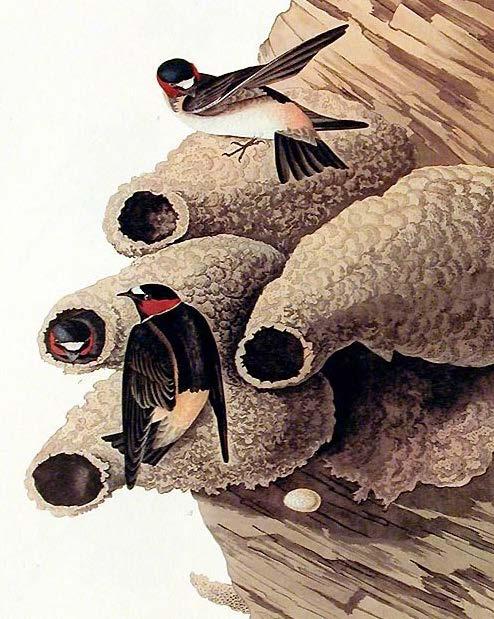 Cliff Swallow nests – illustration by John James Audubon
Cliff Swallow nests – illustration by John James Audubon
furniture, inside buildings, and beneath stones or boards. The roughly softball-sized nests are usually constructed of very soft plant fibers including the silky white parachutes of milkweed seeds – cropped short and packed like cotton wadding. Again, depending on what’s available near their nest, they might use thistle down, dogbane silk, animal hair, feathers, leaves, grasses, pine needles, moss, or dozens of other materials – natural or synthetic. Over the years of tending our Bluebird nest boxes, I have seen hundreds of examples of White-footed Mouse nests and many of their seed caching sites, and they never fail to impress me. Their nests are typically well insulated, protected from the elements, and the small living chamber within looks like it provides the height of comfort for its resident family.


There are many remarkable nest designs used by various bird species. So many, that choosing only a few examples that are especially ingenious is difficult. However, I’d have to say I am most intrigued by the mud nests of the Cliff Swallow. The Cliff Swallow is now only rarely found in the Mohawk Valley, but formerly it was not an uncommon species that bred primarily in the rural countryside. They would frequently build their gourd-shaped mud nests high on the sides of barns – attached under the eaves. The species are colony nesters, so a single site would often hold more than a dozen nests located side by side. Both male and female Cliff Swallow participate in the construction of their nest. They will visit mud puddles, creeksides, and/or pond edges to collect mud or clay pellets which they then ferry to their nest site and plaster onto the structure. A pair may take over a week to complete their dwelling and make over one thousand trips back and forth to get mud. The finished nest may be up to eight inches wide at the base and have a tubular entrance that is several inches long. The nest chamber within is lined with fine grasses, animal hair, and/or feathers. Other birds show similar ceramic skills, but the Cliff Swallow stands out as a true master potter.
Of the many open-cup style nests built by songbirds, there are some that strike me as true architectural masterpieces. Nests that are functional, structurally sound, comfortable for their




occupants, and designed and decorated to be congruent with their surroundings. The nests of vireos, gnatcatchers, and hummingbirds fall into this category. The latter two tend to be meticulously camouflaged to look like a natural knot on the branch to which they are attached. Vireo nests differ from gnatcatcher and hummingbird nests by the way they are attached to their host tree. While gnatcatcher and hummingbird nests are secured to horizontal branches by their base, vireo nests are secured to forked branches by their rim. Essentially this makes them more like baskets than cups. One of the things that always impressed me about the vireo’s nest is its elasticity. A considerable amount of spider silk incorporated into the structure is largely responsible for that. Several times I’ve watched female Red-eyed Vireos using their bodies to mold the

shape of their nest’s interior. The nest stretched one way and then the other as the bird leaned her chest into each side.






One of the most remarkable bird nests in our region is that of the Baltimore Oriole. Female Baltimore Orioles are world-class weavers, constructing their long-necked, basket-style nests out of long plant fibers, bark strips, animal hair, string, and other man-made fibers. It hangs down low, sometimes resembling a whitish wool sock with a baseball in its toe. The oriole begins the construction process by making a secure connection between a tree branch and what will become the rim of the nest. She then spends four or five days collecting materials and weaving her nest. The male oriole monitors her progress but does not assist in the construction process. His job is to be alert and to defend the territory from predators and rivals. Once her woven basket is complete, she lines the base of the interior with fine grass, animal hair, and cottony plant fibers. The long-necked design of the oriole nest discourages egg and nestling predators. In another attempt to deter predation, Baltimore Oriole nests are often placed high in the treetops at the end of a long, isolated branch, often overhanging a stream, wetland, or road.


Perhaps the nest of the Pied-billed Grebe
doesn’t look so amazing, but it is specially adapted to endure the most prevalent type of disaster that affects its wetland habitat – flooding. While the nests of their fellow inhabitants (including geese, ducks, and rails) are often flooded out and destroyed by high water, grebe nests float, and can survive fluctuating water levels. The Pied-billed Grebe makes a simple depression on a mat of dead, floating aquatic vegetation. Essentially, their nest is a tiny island on the water, moored at its base and able to rise and fall with the water level. Pied-billed Grebes are uncommon in the Mohawk Valley but can be encountered at the Utica Marsh and a handful of other marshlands. Observing them at their nest site is challenging since their nest is often well hidden among a mini archipelago of cattail and tuckahoe beds. Also, the grebe,

adept at diving, often approaches their nest underwater, surfacing only when reaching the islet’s edge. As is the case with many marsh denizens, you may stand a chance of seeing them on their nest early in the season, before the reeds fully develop, but by mid-June the leafy veils are in place, and seeing nests becomes near impossible.


One of the most impressive animal nests of all is created by an insect. The Baldfaced Hornet is particularly skilled and ambitious in constructing their nests. The finished nest, often hung like a lantern from a remote tree branch, can be as large as a basketball, although shaped more like a turban. At the core of the nest are several layers of brooding combs – all pointing down. There is typically a single entrance/exit hole located on the side of the structure, near its base. The entire nest is enclosed in a durable wall of paper. The
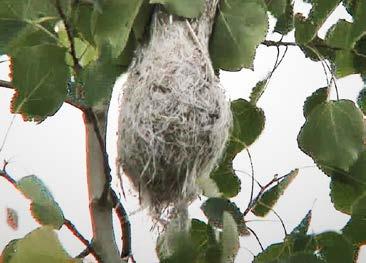





nest is begun by the queen who is soon joined by other females that work cooperatively to complete the nest. The gray-colored paper is created from wood fibers mixed with saliva. Layer after layer is slathered on by the insects until they complete the enclosure. A large nest may take three weeks or longer to complete and may undergo further expansion as the colony continues to grow. The finished nest offers protection from the elements as well as from predators, not that many would dare provoke a colony of hornets – one of the most notoriously aggressive nest defenders of the insect world. As marvelous a structure as the hornet nest is, it is not for all-seasons and cannot protect its occupants from freezing temperatures. Indeed, the wasps must abandon it in the fall or risk freezing to death. The paper nest, although durable enough for summer weather, most often degrades during winter and begins to fall apart. This is when we get the opportunity to safely examine the intricacies of the construction. Of course, the wasps will not reuse these nests even if they manage to survive a winter intact. However, the wasps’ paper is recycled and is regularly incorporated into the nests of a great many songbirds. There is no way to adequately pay homage to the myriad designs and constructions by animals in the natural world. These nests, lodges, burrows, and excavations are ephemeral, and unlike human-built structures, all will seamlessly melt


back into their environment with little trace they existed. Indeed, wildlife are great proponents of compostable housing. Many are keen recyclers, and some regularly refurbish or repurpose. It’s sometimes difficult, but try to resist the temptation to collect old nests. It’s always best to leave them to be recycled or reused by some other animal. •






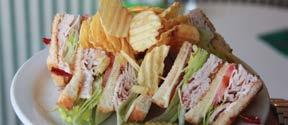





































































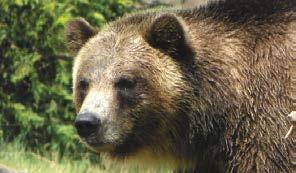























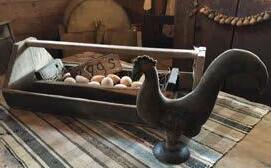
june in nature


 story and photos by Matt Perry
story and photos by Matt Perry


If the month of May is important in the arriving, emerging, or exploding back to life of nature, then June is even more so because it is the time when most wildlife goes about the vital task of reproduction. Since bird migration is essentially over at the month’s inception, practically every species you encounter in June is a local breeder. They may be holding territory, nest building, incubating eggs, or raising young. Most notably, they are heard singing, calling, screeching, or drumming. In good habitat, birdsong abounds in June, and this is especially true in the early morning hours. The dawn chorus of songbirds, which typically begins about an hour before sunrise, is one of the most compelling natural phenomena in the world. We are fortunate that in parts of our region – particularly in the Adirondacks and Adirondack foothills, the dawn songbird chorus can be intense. It can be likened to a symphony playing a well-rehearsed piece of music.
Generally, many birds wake up more than an hour before sunrise. Most won’t begin flying or foraging until daylight, but they almost instantly begin to sing, and they sing a lot. They sing their breeding songs, repeating them dozens and even hundreds of times – sometimes going on without pause for an hour or more. They sing to remind their neighbors they are defending a terri-
tory, to attract and keep their mates, and to demonstrate to their offspring how their species’ song is supposed to sound. Different birds tend to join the chorus at various times. Often larger species begin singing earlier than their smaller counterparts. Some species perform a special dawn song, only to be used at that time of day, while most others employ their species’ typical breeding song, only repeating them incessantly. For a few years (in the late 90s and early 2000s), I conducted a bird survey route. It was a twenty-five-mile-long route which started in the outskirts of Boonville and ended in Whitestown. The survey began at 4:50 AM, prime time for the revving up of the songbird chorus. The protocol of the survey was to stop at designated half-mile intervals, get out of the car and count every bird heard or seen for three minutes and then drive another half mile and do it again. There were fifty stops in all, but it was those first few stops that introduced me to the intensity of the songbird chorus in the Adirondack Foothills. At the time, I was quite proficient at identifying birds by their songs and calls, but nothing prepared me for deciphering the wall of sound I was presented with on those
first couple of stops. I was used to treating a habitat full of singing birds as an orchestra and picking out the different players with their respective instruments, all of differing quality of tone and pitch. However, this was like having three orchestras playing simultaneously and performing different songs! It was auditory anarchy. Certainly, the din was pleasant, as long you were not trying to parse it and count the musicians! I recall the first time I did it, spending the first minute of my three-minute allotment overwhelmed and unable to count anything. Fortunately, after that first hectic minute passed, I was able to systematically dissect the noise and shake some identifiable bird songs out of it.
Of course, throughout our region, dawn songbird choruses are not so daunting or indecipherable and occur virtually everywhere. Indeed, every habitat hosts some kind of chorus – from the forests and the meadows, to the marshes and every suburban neighborhood and urban center. Each distinct environment has its own avian orchestra comprised of a different ensemble
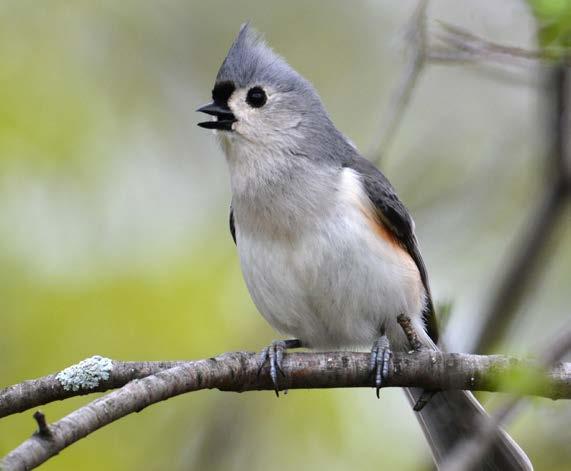
of singers. Through monitoring the Utica Peregrine Falcons, I’ve become well acquainted with the songbird chorus in the heart of downtown Utica. Although this chorus is replete with a percussion section provided by traffic noise, sirens, and all manner of extraneous city sounds, it is a coherent chorus dominated by American Robins, Chipping Sparrows, Northern Cardinals, and Gray Catbirds. Due to the light pollution in the city, the dawn songbird chorus begins even earlier than in the rural countryside – starting at 3 AM or even earlier. In fact, I heard a downtown Robin start to sing at 2:45 AM on the morning I was writing this!
One way to enjoy the dawn songbird chorus or any birdsong near your home at any time of year is to employ a simple audio monitor system. For many years I used baby audio monitors – mounting the transmitter between a closed window and screen and having the mobile receiver in whatever room I was working in. This enabled me to hear the birds and everything else in the yard without having to have the windows open. It has been a great way to keep track of the birdlife in the neighborhood and has provided me with a heads-up that a rare or interesting species was paying a visit.
So, if you have trouble sleeping or otherwise find yourself awake at 5 AM, open a window or go outside and experience the dawn songbird chorus. It is a special feature of June that can be enjoyed even without knowing the identity of the singers. •








Deli Tacos in Clark Mills

 by Maryann Vanderpool-Imundo
by Maryann Vanderpool-Imundo


The colorful pennant flags draped around Deli Tacos in Clarks Mills reflect the festive experience people have visiting this authentic Mexican restaurant. As customers step in, they transcend south of the border with the encounter of mariachi music and bold hues of yellow and green. Mexican blankets cover the tables, and a picture of Hispanic painter Frida Kahlo, dressed in brightly colored clothing and hair adorned with red flowers, hangs on the south wall.

Approaching from the kitchen wearing a big smile is Chef Fernando Juarez. He is holding his hand out for a shake. “Hello, how are you doing, sir?,” he says with a charming Mexican accent. His affable personality is disarming and makes people feel welcome.




Juarez came to America ten years ago from Mexico City. He first lived in Los Angeles and worked as a dishwasher in a local restaurant. When promoted to prep cook, his talents were recognized when asked to prepare a few Mexican dishes. He received many accolades for his chicken mole. “It has six different mole, ah peppers, and six different salsas, ah sauces,” Juarez said as he referenced the Spanish to English app on his phone. “All of my dishes use the traditional spices of Mexico: lime, cilantro, cumin, and jalapeños.” The rewards Juarez received for his cooking skills inspired him to start his own restaurant in Central New York, where he was reunited with his parents who live in Herkimer.
“One of my customers told me that my restaurant changed her life! That made me so happy,” Juarez said as he patted his heart. “I love to bring joy to our neighborhood.”


Customers can begin their day with a Mexican breakfast of huevos rancheros: two fried eggs served on a layer of black bean purée and a crispy tortilla topped with salsa and cottage cheese. Other popular dishes are: fajita plate, asada platter, tacos, quesadillas, enchiladas, nachos, and camarones a la diabla. All of the menu items come with a side of homemade corn tortillas and three
different homemade salsas: chili de arbol, green tomato salsa, and red tomato salsa.


As Lia Savage waits for her fajita plate, she says, “I just love Deli Tacos because they’re so nice and helpful by explaining everything on the menu. You just can’t beat it!”


A steady stream of customers arrive to pick up their to go orders. Two regular customers, Alberto Pena and Carlos Santana, seated at the window table both ordered the quesabirria, which is a cross between a taco and a quesadilla containing birria beef, crunchy tortilla, and cheese. The birria beef is slow cooked, ensuring its tenderness.


Vegetarians can order any taco, quesadilla, burrito, or enchilada without meat and use vegetables, rice, or beans as a substitute.

















A pleasant ending to this culinary adventure includes Mexican desserts: churros (a sweet fritter rolled in cinnamon and sugar) or Spanish flan (baked vanilla custard). Both are garnished with caramel.

Juarez is gleeful when discussing his entrepreneurial journey. When asked why he thinks his restaurant is so popular, he said, “Because we cook with a lot of love.” •

the copper easel in Rome
by Cassandra Miller
Rome’s artists have a champion in The Copper Easel, whose founder and curator Adam Prescott Chrisman says he doesn’t think “lighting yourself on fire to keep other people warm” is “necessarily a bad thing.”

Prescott Chrisman is stoking the flames for an inclusive arts community and providing one of the hottest spots (figuratively speaking) for the Rome region at The Copper Easel, an art gallery, supply store, and arts education center.



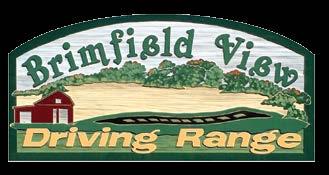
Located in Rome’s Arts District on West Dominick Street next to the Capitol Theatre, The Copper Easel is marked by a rainbow flag waving in front of its entrance. Since 2022, it has shared its pink-and-seafoam green space and hosted events with Superofficial Coffee, another business that encourages community. Together, the two create a welcoming environment, where you can get a one-of-a-kind paintings, art supplies, and a delicious strawberry shortcake latte in one stop.
The Copper Easel celebrated its fourth anniversary in the space in May with a weekend of festivities, including a “late night chill and grill potluck,” bowling night, and party.
On Saturday, June 10, Prescott Chrisman, who is also the board president of the Rome Art Association, has organized a queer artisan fair that will be in front of the shop and feature work by LGBTQIA artists as part of Rome Pride.

“I’m excited about organizing an event for the queer community because I think Romans have watched larger cities celebrate Pride Month every year and we’d like to represent the people of our area, as well as contribute to the region’s progress toward a more loving and welcoming Central New York,” says Prescott Chrisman.
In addition to special events and social occasions, The Copper Easel offers about ten art classes a month for ages 3 and older at af-
fordable prices. For example, a watercolor class in May was $35, and “paint-pouring for kids” was $25. Each month’s calendar of events and classes is usually available the last week of the previous month.





The walls of the space are filled to the ceiling with art by local artists. In April, 32 local and regional artists were represented, each paying $30 a month in rent. The Cooper Easel takes 15 percent commission from sales–a small cut compared to most art galleries.
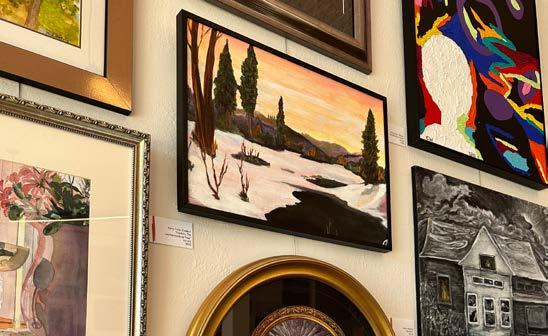

“The idea is to sustain art in Rome and for artists to keep a majority of the profit,” Prescott Chrisman says. “We just want to make sure our bills are covered.” In addition to artworks on the wall, The Copper Easel sells smaller items by artisans like jewelry, cards, and keychains. There’s even a vendor who sells cameras and develops film for customers.
“I like weird artwork,” Prescott Chrisman says. “I don’t think the word ‘weird’ has a negative connotation to it.”


That accepting philosophy makes for an open, unpretentious environment where visitors immediately feel at ease. Whether you’re going for a special event, class, or beverage, The Copper Easel and Superofficial Coffee have created a cozy space where you’ll want to return often. •




















2023 summer farmers markets

Herkimer County
Dolgeville Farmers Market
Saturdays: 9am-1pm, May 20-Oct. 28
Plowe Park, S. Main St & Cramer Ln., Dolgeville
Frankfort Farmers Market
Saturdays: 9am-1pm, June 17-Oct. 28
Frankfort Marina, 122 Marina Park Dr., Frankfort
Herkimer Farmers Market
Thursdays: 3-7pm, June 1-Oct. 12

Town Park, 154 Pine Grove Rd., East Herkimer

Little Falls Farmers Market
Saturdays: 8am-12pm, May 6-Oct 28

M&T Bank lot, Albany St., Little Falls
Old Forge Farmers Market
Fridays: 1-5pm, June 16-Oct. 6
Hiltebrant Rec. Ctr. lot, 201 North St., Old Forge
Richfield Springs
Saturdays: 8am-1pm, June 17-Oct. 28
Spring Park, Main St. Rte 20, Richfield Springs
Madison County
Farmer’s Market at Cottage Lawn
Tuesdays: 2-6pm, June 6-Aug. 29, 2023
435 Main St., Oneida
Village of Hamilton Farmer’s MarketTuesdays:


Saturdays: 8am-4pm, May -Oct. , 2023
435 Main St., Oneida
Otsego County
Cooperstown Farmers Market
Open year round! Saturdays: 9am-2pm, May-Dec.;
Tuesdays 12-5pm, July-Sept.; Saturdays: 10am2pm, Jan.-Apr. 101 Main St., Cooperstown


Oneida County
Boonville Farmers Market
Thursdays: 12-6pm & Fridays: 2-7pm June 22-Dec.
Top of Erwin Park, Moose River Rd., Boonville
Clinton Farmers Market
Thursdays: 10am-4pm, June 1-Oct.
Village Green, Clinton
Holland Patent Farmers Market

Saturdays:10am-1pm
Agway, 7794 Park Ave., Holland Patent


New Hartford Farmers Market




Tuesdays: 2:30-6:30pm, June 14-Aug. 30
New Hartford Village Green, New Hartford
Oneida County Public Market
Open Year-round. Saturdays: 9am-1pm
Outside behind Union Station, 321 Main St., Utica
Oriskany Farmers’ Market
Wednesdays: 2-7pm, June 7-Sept.
Trinkaus Park, Route 69, Oriskany
Rome Chestnut Street Market
Wednesdays: 3:30-6:30, May 24-Sept. 20
502 W Chestnut St., Rome



Utica Farmers Market
Wednesdays: 8am-5pm, Starts June 28th

Next to City Hall at 730 Broadway, Utica
Vienna Farmers’ Market
Thursdays: 3-6:30pm, May 25-Oct.
2740 Route 49, Blossvale
Whitesboro Farmers’ Market


Mondays: 2-7pm, June 5-Sept
Village Green, Main and Clinton Sts., Whitesboro
Stuff

That

It is the time of year when farm stands open and we can find fresh produce and more in a fresh air setting. Sometimes you can find one just driving down the highway. I found a nice place at And Stuff of That Nature on Route 5 in Frankfort, NY.

I actually drove by it a few times, thinking, “Hey, what’s that?” Then I saw their Facebook page when a friend shared it. I like their Facebook page (as well as Liking it, if you see what I mean), because they make a lot of posts. Often they show tempting pictures of their merchandise, but also offer some helpful advice, like reminding us to cover our plants when we were still getting frosts.

Scrolling down the Facebook page as I worked on this article, I was reminded that they suffered a disaster last November when a tree fell on the honey house. How awful! But they were determined to rebuild, and rebuild they did. I like businesses that share their ups and downs like that.


It was still early in the season when I was there, so no fresh produce. However, there were farm fresh eggs, honey, and some lovely hanging baskets as well as fresh herbs. Fresh herbs! I was delighted. I am determined to have a container garden in my deck as I used to have but from one rea-





ROCKING AND ROLLING
 by carol higgins
by carol higgins

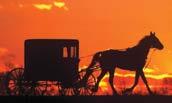

Planet Mars has been studied since ancient times, but the Space Age made the dream of an up-close look a reality. NASA’s Mariner 4 was the first to fly by and capture photos in 1965, then the Apollo lunar program and Viking missions paved the way for a fleet of NASA Mars orbiters, landers and our focus this month –rovers!
During Apollo, six landers delivered 12 astronauts to the surface of the Moon. Every two-person team collected samples of regolith (soil) and rocks, then sealed them in special containers. Astronauts were limited to an area within walking distance in the first three missions, but the situation changed for the last three because their landers also delivered a rover! The battery-powered Lunar Roving Vehicle vastly extended the range astronauts explored, improving the variety of samples. The 842 pounds of lunar material returned during Apollo led to many discoveries and is still analyzed today.
We are many years away from sending humans to Mars, however orbiters and landers equipped with instruments and cameras are excellent alternatives. Viking 1, NASA’s first successful Mars orbiter and lander, arrived in June 1976, followed by increasingly complex missions – including five rovers! Rovers are the eyes, hands, and tools for mission researchers, offering a unique advantage over stationary landers. Driving on the surface increases mission flexibility and widens the range and scope of exploration
options.
Sojourner was the first rover on Mars, touching down on July 4, 1976. The size of a microwave oven with six small wheels, it had three cameras and a spectrometer to identify the chemical composition of rocks and soil. Designed for a seven-day mission, Sojourner operated for 83 days, traveled 330 feet, took 550 photos, and returned valuable surface and atmospheric data. A great success, it set the stage for a new generation of vehicles.
Identical twin rovers Spirit and Opportunity were the size of a golf cart. Their robotic arm had high resolution cameras, three spectrometers, and an abrasion tool to grind rocks for analysis. Spirit landed January 4, 2004 and Opportunity arrived January 25, together searching for evidence of past water at different sites. They far exceeded their target 90-day life: Spirit operated for 2,266 days, Opportunity for almost 15 years! Both found evidence of past water and conditions that could support microbes.

Curiosity landed August 5, 2012 and is still operating! The SUV-size explorer has 17 cameras and a seven-foot long robotic arm with advanced science instruments and tools, including a drill and rock-vaporizing laser! To determine if Mars had conditions suitable for microbial life, it analyzes the chemical composition and structure of soil and rocks to get a historical record of climate and geology. Curiosity is now climbing Mount Sharp, looking for clues about the transition from
watery world to today’s dry landscape. Perseverance is the most powerful roving science laboratory of all. The same size as Curiosity, it landed February 18, 2021 to look for past habitable environments and signs of microbial life, and deposit core samples in tubes for a future retrieval mission. In addition to its upgraded robotic arm and science toolkit, it has hazard-avoidance cameras and software, ground penetrating radar, environmental sensors, and microphones. It also delivered the little Ingenuity helicopter, a technology demo designed for five test flights. So far, it has flown over 50 times and is scouting new routes for Perseverance! The mission is going well and providing huge volumes of data and images.
Follow Curiosity, Perseverance and Ingenuity on the www.nasa.gov website. There, you’ll get the latest news, detailed rover and helicopter info, and maps showing their current location and path taken so far as they explore Mars.


Wishing you clear skies! •
 Hanny’s Voorwerp. Image Credit: NASA, ESA, W. Keel, Galaxy Zoo Team
Mohawk valley astronomical society
Hanny’s Voorwerp. Image Credit: NASA, ESA, W. Keel, Galaxy Zoo Team
Mohawk valley astronomical society
OpenStudios









YuliaLevkovichandTomMontan
June 24–July 29, 2023
Mohawk Valley Center for the Arts 401 Canal Place, Little Falls, NY (315) 823-0808 mohawkvalleyarts.org
SportingFashion:OutdoorGirls1800-1960
Members preview: Thurs., June 22, 5:30-7:30pm






The first exhibition to explore the evolution of women’s sporting fashion over this 160-year period. The exhibition includes 65 ensembles comprised of more than 480

Munson
310 Genesee St., Utica, NY (315) 797-0000 munson.art


Ripple&Roar:TheWonderof
June 10–July 30, 2023
Through
Works celebrating the ethereal beauty of water, explore its inspirational qualities, reflect its many changing moods, and underscore our critical relationship with it.
View 3273 Rt. 28, Old Forge, NY (315) 369-6411 • viewarts.org




In 1832, Cholera finally reached Utica. In response, 3,000 of the city’s residents fled. During the previous decade, cholera had spread throughout India, killing hundreds of thousands of people and 10,000 British troops.

Physician and life-long Utican Moses Mears Bagg, whose grandfather Moses Bagg Sr., founded both Bagg’s Tavern and the celebrated Bagg’s Hotel, witnessed the devastation. He wrote movingly of a “...silence of death” reigning “in the streets.”
Few vehicles could be seen, he noted, “but hearses for the dead, and carriages for the sick or in provision for their needs...Ministrants in like service (were) the only persons on foot that ventured abroad.”
Grim news was shared that summer in a letter sent to Othniel S. Williams, son of Hamilton College trustee Othniel Williams. Living in Salem, MA, the younger Williams was no doubt horrified to learn from his parents that “...the cholera is near us, to be sure.”
Initially, in Utica as elsewhere, shame was attached to those stricken due to the belief that most victims were poor, intemperate, and had despicable personal habits. Probable deaths from cholera among those clearly not in that category were blamed on other causes. This changed after the epidemic began claiming the lives of prominent citizens such as Clara Ostrom, sister of General John H. Ostrom.
Carriage maker William Gainer, who lived on Washington Street, announced that he wasn’t fearful and would do nothing to avoid becoming ill. His daughter died that August and he followed soon after.
Another Washington Street resident, attorney Philo Rockwell, fell ill while attending services at First Presbyterian Church. “Asiatic cholera” was quickly diagnosed, but doctors were helpless, and he didn’t last the night.
On July 17, the disease claimed former Village of Utica president Ezra S. Cozier, 48. Lauded for his “sound judgment...and great amiability of heart,” Cozier had been working to help the sick and their families, but “about an hour after visiting the hospital... (he) was in his grave.”
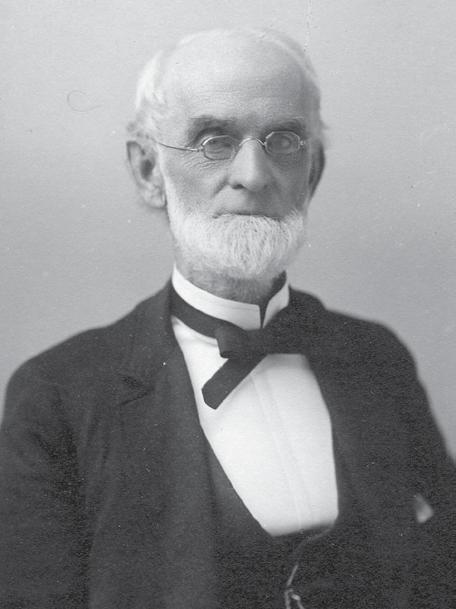
Two schools of thinking prevailed concerning the nature of cholera. Contagionism, a precursor to germ theory, linked outbreaks to contaminated water and food. Impoverished citizens were more likely to source water from contaminated wells and could least likely

afford to flee, making them vulnerable and early victims of the disease. Contagionists supported the use of quarantines and urged the populace to avoid dirty drinking water and green or unripe fruit. They encouraged the “purification” of buildings using substances such as chloride of lime.


Those seeking to advance the competing theory of miasmatism, blamed the epidemic on the atmosphere. The term “miasma” connoting bad air or night air, which many saw as causing disease. Since miasma was seen as being limited to specific areas, believers who lived in such locales, and had the means to do so, fled.

Not until the 1882 discovery of the cholera bacillus (Vibrio cholerae) by German microbiologist Robert Koch, was the theory of miasma finally laid to rest. Eventually, two strains were identified as producers of the cholera toxin that caused cells lining the intestines to release increased amounts of water, leading to diarrhea and rapid loss of fluids and electrolytes. Cholera, untreated, can result in death in hours from dehydration and septic shock. (An interesting side note is that Dr. Koch was apparently unaware that the Italian microbiologist Filippo Pacini had actually identified the specific bacterium in 1854, naming it Chlorogenic vibrios.)


Uticans were not alone in their suffering, as numerous residents in virtually every city along the Erie Canal and New York’s lakes and rivers fell victim. This occurred despite quarantines and new laws, some of which were directed at canal boats. The disease in Utica, part of a North American outbreak, was thought to have been spread by immigrant ships from Europe, since thousands had died in New York City, a major destination of those emigrating from Ireland.


In June and July, Utica’s Common Council approved petitions for the creation of temporary hospitals. The associated costs of these and related measures resulted in pushback, some of it violent, though none as devastating as the “cholera riots” in England, where mobs, furious over the expense, attacked community hospitals.

The third worldwide epidemic claimed the life of former U.S. President James K. Polk. It was not until 1849 that London physician John Snow definitively connected contaminated drinking water with outbreaks of cholera. This allowed him to develop a tentative version of germ theory. That same year New York City’s Sanitary Committee issued posters warning people to “Abstain from cold water, when heated, and above

all from Ardent Spirits, and if habit have rendered them indispensable, take much less than usual.”




While what may have been cholera was described by Hippocrates in 400 B.C.E., its appearance in modern times can be traced to the First Pandemic (1817 - 1824), which killed thousands in India, as noted above. Its second iteration, affecting Utica, struck North America and Europe between 1826 and 1837; this was followed by a third (1846-1860), which devastated parts of North Africa and South America, and fourth (18631875), killing multitudes in Italy, Spain and the United States.

A fifth pandemic (1881-1896) traveled from India and the rest of Asia to Europe (267,890 dead in Russia) and South America, while a sixth appeared from 1899-1923 in Egypt, the Arabian peninsula and the Philippines.

Despite its causes being known and the availability of treatment, cholera continued to wreak devastation well into the 20th and 21st centuries, with the World Health Organization (WHO) still, in March 2022, defining outbreaks as constituting a “current epidemic.” •
Oneida County History Center




The Adk’s PyramidGothics Hike
story and photos by Gary VanRiper

June 14. That was the date in 2007 I hiked (for the first time) a portion of the Great Range in the high peaks wilderness of the Adirondacks.


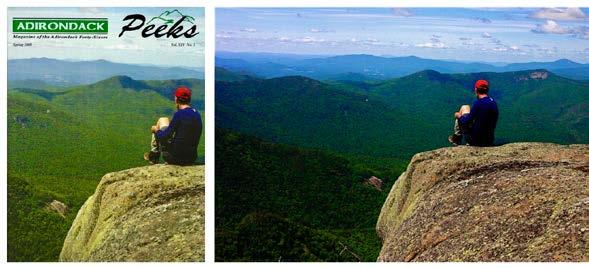
It was 7:45 a.m. on what proved to be a hot, clear, sunny day when a soon-to-be best friend, Mark Lowell, and I began the long march the length of the three-mile Lake Road near Keene Valley to begin the ascent of Sawteeth Mountain. For me, this would be just the 18th of the 46 high peaks required to be officially recognized as an Adirondack 46er.
After summiting Sawteeth, we traversed the trail toward Gothics. What I did not expect was the spectacular view of Gothics itself from Pyramid Mountain which is positioned between Sawteeth and the Gothics summit. Sweeping the horizon and appearing as a massive, seatless amphitheater, the bare-rock slide across from Pyramid is mesmerizing, in the right light almost hypnotic and it is difficult to pull oneself away to continue the trek along the range.
But the Gothics summit of the 10th highest peak in the Park, at 4736 feet, in no way disappoints. It is known



for having stunning views and the Pyramid/Gothics combination has drawn me back to make the hike two more times! A cropped version of a photograph I took from this peak was used for the cover of the Spring 2008 edition of Peeks Magazine, the official publication of the 46ers. (If you hike with me, plan on becoming a model)
A bonus on this hike was also summiting Armstrong, giving me a third peak for the day and a total of 20 toward my goal of 46. We then bailed from the trail to make our descent and passed Beaver Meadow Falls making it a perfect loop, on a perfect day, signing the register on the way out at 7:45 p.m.

When making plans for any of these hikes, it is wise to have the latest edition of a map and the Adirondack Mountain Club’s High Peaks Region trail guide. Even then, still be ready for possible changes in the terrain and the interior’s man-made infrastructure (i.e. ladders and bridges) intended to assist hikers navigate more challenging spots. •


The Adirondack Mountain Club is a wonderful resource for all things “ADK High Peaks Wilderness.” The AMC provides many guided hikes with nearly 30 planned June through August alone! https://adk.org/guided-trips/
















In 1974, Tim and Peggy Spencer Behrendt set off on an adventure. They began a new life in the woods of Cold Brook, NY, without modern conveniences like electricity or indoor plumbing. These are excerpts and reflections from Peggy’s journal chronicling their adventures and also her childhood memories growing up in Westmoreland.










When I was a child, my family attended the annual Memorial Day parades in Clark Mills where brass bands played, girls twirled batons, firetrucks rumbled by, and men in military uniforms marched smartly down the main street in that quaint little town where my father grew up. We always went ahead to the cemetery where my Spencer ancestors are buried to wait for the arrival of the parade and the final tribute to those who sacrificed their lives to save others. The firing of guns in salute was intense to my young ears, and the sound of taps after that, played on a single bugle, echoed lonely and mournful among the silent gravestones. Among those whose lives were tragically lost are two courageous little girls (Dorothy Clough and Annie Verity - buried in the same grave) who lost their young lives trying to save a little boy who had broken through the ice in the dyke by the Oriskany Creek next to the old factory in Clark Mills (recently removed). One was my father’s cousin, and her family subse-

quentally moved to California where ice is seldom seen.





When I joined the Brownies for a brief time, I had the opportunity to be part of the Memorial Day parade in the town of Westmoreland. I was dressed in a freshly pressed uniform. It turned out to be a cloudy day and as the other Brownies and I waited for our turn to march, it began to rain. Mom had had the foresight to provide me with an umbrella, and I felt a little smug open ing it in the unwelcome rain, as none of my sister Brownies had one. Very quickly some began squeezing in with me under my tiny shelter, and I was flattered to be getting such positive attention. But I was suddenly surprised and dismayed to find that, although I was still holding the um




brella, I was standing in the rain because I had been crowded out!






Feeling crowded is not unfamiliar in a family of five children and two adults with one little bathroom. Practicing the piano had to be coordinated around favorite TV shows. And the TV shows were annoyingly interrupted if mom was sewing upstairs because the picture turned into fuzzy static whenever her foot pressed the power pedal of the sewing machine.
Tiny bedrooms had to be shared. An unused doorway stood between my room and my sisters, and I went to great lengths to try to prevent their little eyes from peeking into my private space by positioning my bureau in front of it. But snooping still occurred when one was away. I got proof
one day when the film in my camera (which was stored in my bureau drawer) was developed and I had an inexplicable picture of my bedroom ceiling behind a very surprised look on my little sister’s face.
Tim had an attic room he shared with his older brother whom he admired greatly and was always kind and protective of Tim. But I suspect having a kid brother constantly around required more than a little tolerance. But they had quite a bit of freedom. Tim liked to show off to young visitors by piercing the cardboard walls with his grandfather’s dress sword and fondly remembers the scent of lilac from the tree that bloomed just below their window.
And their closest neighbor never spoke to them. They partly were mad because their friends had been outbid for the house, but also because they were Finnish and had lost friends and relatives when Germany invaded Finland during WWII. The Behrendt name is distinctly German, and they resented this proximity.


Another neighbor had two sons, one suffered from a mental disability, and the other, Robert Brink, was a star athlete and scholar. Before Bob left to fight in Europe during WWII, he passed by young Tim who was playing “war” with toy guns beneath the old


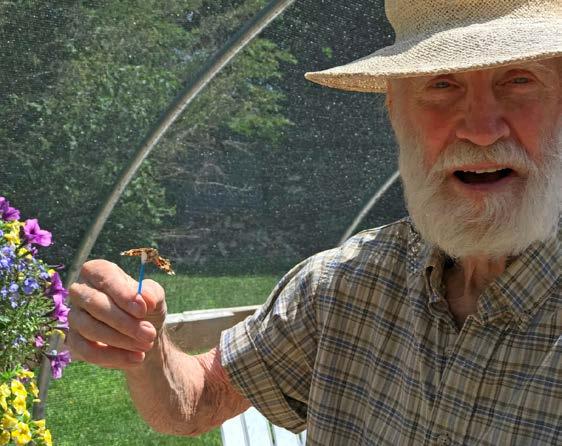


maple tree in his front yard. Bob said to him, “War is not a game, Timmy. Play sports instead.” Tim never saw him again because Bob died in the in vasion of Normandy. This had a pow erful impact on him.
These factors influenced our moti vation to acquire the 520 acres of the wildlands around us, creating the Sha wangunk Nature Preserve, where the only crowding is of trees and mosses, where people are free to safely roam, and the only killing is done by wildlife for survival.
From my 2020 June diary: Ink (our kitty) had three baby porcupine quills in her face this morning. She cried when I pulled them out. She also brought some little critter into our bedroom; I don’t know where it’s gone. I hear it squeaking.

We went with Becky and her friends to the Lavender Farm in Prospect. We got butterflies to land on sugar-coated Q-tips in our hands and cuddle adorable baby goats. However, I was surprised when I felt a tug on my new, long skirt and turned around to see it going down the throat of an adult goat! I barely got it all back by playing tuga-war with the goat, but a section was almost ripped out. I worked hard to repair it this afternoon, with a blanket stitch on all
the edges because the fabric is so raveled, and was very pleased with the results, only to discover that I put the seam on the wrong side!!! I’m always doing that! I think I must be dyslexic as a sewer. Sigh.
We biked our 4½ mile “loop” with Becky towards evening and fed some handfuls of fresh grass to the neighbor’s goats along the

way. The Hermit Thrush was singing when we walked her home. Fireflies were out, creating a corridor of dancing lights along the road. At 9:30 pm the night sky was still pink with some blue showing through.
I remember nights lying on hanging cots on the porch of the family camp on the St. Lawrence River when I was young… the buzz of mosquitoes on the other side of the




St.
Lawrence River
screen, the squeak of the chain suspending my cot as I swung it gently by pushing my foot on a support beam. I’d see shapes of animals or people’s faces in the silhouettes created by the canopy of oak leaves between me and the stars, changing shape with the wind. I felt filled with the intense oxygen in that fresh, cool air. It is like that here, tonight, walking home, enjoying the silhouettes of our trees against an underpainting of lighter shades of blue, gray, and pink - the cool night air saturated with freshness and oxygen....so perfect... so comforting...
As we approached Becky’s house, we saw a medium size bear run away from her bird feeder. Then we watched fireflies for a long time standing in the middle of the meadow without speaking, savoring the intrepid silence of this Adirondack summer night, an immersive experience surrounded by silent flashes of biolumines-
Shawangunk Summer Workshops



RUSTIC FURNITURE MAKING
Sat. June 10th 9am-Noon
Shawangunk Nature Preserve
Using fresh, local branches and twigs you’ll learn how to attach them to a nice board to form a small bench or table which may then be decorated with a mosaic of different colored twigs. Bring a portable drill, 1/8” drill bit(s), Phillips head screwdriver and Phillips head drill bit, a small pruning saw, hand pruners. At 255 Shawangunk Rd., Cold Brook, NY Materials $20. Reserve a week ahead. Call 315 826-7405
BARK BASKET MAKING

Sat. June 17th 10am-1pm

Shawangunk Nature Preserve
You’ll love the piney scent and rusticity of this sturdy, natural balsam-tree bark basket in your home. We’ll peel the bark fresh from a tree; score it; bend it into shape; and stitch it with decorative techniques. Hands are guaranteed to become sticky and fragrant with balsam sap, but don’t worry; it washes off with warm soap and water!

At 255 Shawangunk Rd., Cold Brook, NY. Materials $20. Reserve a week ahead. You may BYO lunch. Call 315 826-7405




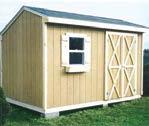





what the coming and going of stars and planets might look like relative to eternity.
(I recently learned that firefly populations are declining worldwide due to light pollution – which interferes with their ability to detect the flashing of prospective
mates, habitat loss and degradation, pesticide use, and other environmental factors. We can all help by turning off outdoor lights during the mating season, avoiding pesticides on our lawns and gardens, and leaving leaves on the ground as they rely on them for shelter through the winter.)


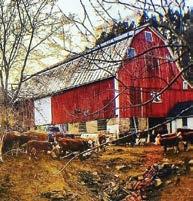



Before going to bed, I put the pan I used to cook supper into the creek for the fish to clean and saw the eye of a crawdad reflecting my flashlight in red. Then, I saw a little fish appear, picking up food particles floating downstream from the pan. It’s hard to leave this wondrous magic and go to sleep, but I have to keep rested so life feels worthwhile!
Tim wrote of June 1971: What can one say in June and to June but “thank you”? This mood began long ago in my youth with lilacs outside my bedroom window waking me with their scent carried on curious cool breezes. Maybe it started even earlier with that chance to run outdoors and play – unbound from the jacket and boots of earlier spring. But this “thank you” grew


deeper with age, as during school years, June meant the end of classes and more baseball, swimming, lazy aimless summer hikes, and late sleeping. Yes, and later in college and graduate school it heightened with the end of exams and a chance for a new routine. Here in Barneveld, it crests solid, as the lilac tree appears outside my window again. Jacket-free children, and the boy with his baseball, hikes, and swimming is back, though David is his name instead of Tim. Again, I feel the “testing” challenge is over and a new routine is possible. June, a time of “thank you.” •
www.shawangunknaturepreserve.com




On the farm with Suzie
Wildlife Visits the Farm
 by suzie jones
by suzie jones
One of the many true joys of living in the country is the opportunity to observe wildlife on a daily basis. Every morning, turkey vultures circle a wide, meandering path across our small valley in search of breakfast. A mating pair of mallards return every spring to our pond—whether they are successful of not, I never know. They are extremely good at hiding their young.
Wild turkeys, usually several mothers and a slew of their fuzzy chicks, pass through our backyard and are often heard nesting in the trees across the road at night. We yodel-call out to them, and they immediately call back, slightly alarmed at whatever it was we said.
Killdeer and deer hide their young in the tall grasses, worrying my husband as he mows our first cutting of hay. I love
St. Francis Annual Festival
June 2, 3, & 4, 2023
More than a festival! A tradition since 1927!
Fri., June 2nd, 6pm: FSCS Jazz Band & Chorus 8pm: Band TBA
Sat., June 3rd, 3:30pm: St. Francis DiPaola Procession to Church


7pm: Soul Injection (bring your chairs)
Sun., June 4th: Noon-3pm Chicken BBQ
St. Francis Di Paola Society
Founded March 6, 1927
152 Eighth Ave. Frankfort (315) 894-4741


the killdeer, especially, with their silly stick legs and frenetic acts to distract us from their nests. The swallows and redwing blackbirds swoop all over the meadow, catching bugs and grabbing tufts of wool from our sheep.
We rarely see black bears, although we know they are around from neighborhood sightings and evidence of their visits. Porcupines and bald eagles are fun to see, although I worry for my dogs (who love to challenge the porcupines) and chickens on pasture.
Hawks, hummingbirds, and rabbits have made a bit of a comeback in recent years, perhaps as a result of our guardian dogs pushing back predators like foxes.
And then there are the coyotes. We hear them in the evenings, their laughing, chaotic yips echoing and bouncing off the hills. On the edge of our little valley, it is often hard to pinpoint exactly where they are, perhaps because there are two or more groups calling to one another on all sides of us.


Sadly, we recently lost an older goat to a coyote. My husband, Peter, observed the animal running amongst our sheep and goats one early evening and chased it off. The next night, while Peter and I attended our youngest daughter’s prom “grand march” at school, our eldest daughter Harper kept an eye on the farm. In a matter of minutes, the lone coyote had managed to grab the older goat by the neck, wounding her severely. The rest of the herd, 150 adults and babies included, chased the coyote away while they formed a tight cluster around their wounded companion.

Harper sicced our dogs on the coyote, chasing it off far into the woods. Unfortunately, there was little she could do for the goat. Both dogs came back 20 minutes later, having rolled themselves in what I can only assume in coyote dung. Good grief.
The next evening, hubby Peter sat with a .22 in wait for the coyote. Like clockwork, the animal reappeared at the same time, ready to try again. Peter took a shot, but missed.
We’ve waited for him or her every evening since, ready this time to defend our animals. There has been no bold reappearance, but I’m sure the coyote is watching us, waiting for the right moment. Knowing the coyote is out there is a good reminder that we are not the only ones doing the observing! •


Suzie Jones and her husband, Peter, own Jones Family Farm in Herkimer. Together, with their children, they produce specialty goat cheeses and gelato. Find them at local farmers’ markets and online at www.anotherjonesfamilyfarm.com


KAC Welcomes New Executive Director, Anita Welych



CLINTON — The Kirkland Art Center has named Anita Welych as the organization’s executive director, following a search by the center’s board. Welych brings more than 30 years of experience in arts administration and arts education, having worked at Cazenovia College as the director of the Arts Management Program and as a professor of art.
She was a co-founder and director of the Syracuse alternative gallery Altered Space from 1990 to 1996 and she served on the board of ArtRage Gallery for several years; currently she serves on the Syracuse Public Art Commission.






Welych earned a bachelor of fine arts degree from Cornell University and holds a master of fine arts degree from Syracuse University. She has worked in book arts, collage, printmaking, painting and installation, and she has exhibited her work nationally and internationally.
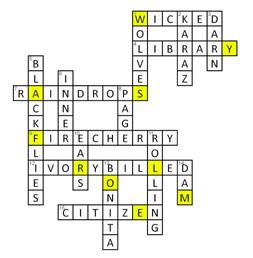
Keeping Mohawk Valley Living on the road for years!


Steet Toyota Yorkville (315) 736-8241


Steet-Ponte Ford Lincoln Yorkville (315) 736-3381
Steet-Ponte Mazda Yorkville (315) 927-5081
Steet-Ponte Chevrolet Herkimer (315) 866-5080



Steet Toyota of Johnstown Johnstown (518) 762-7222
Steet-Ponte Volkswagen Yorkville (315) 736-8291

United Auto Sales Yorkville (315) 736-3361

Steet-Ponte Nissan Yorkville (315) 864-7500


www.steetponteautogroup.com






